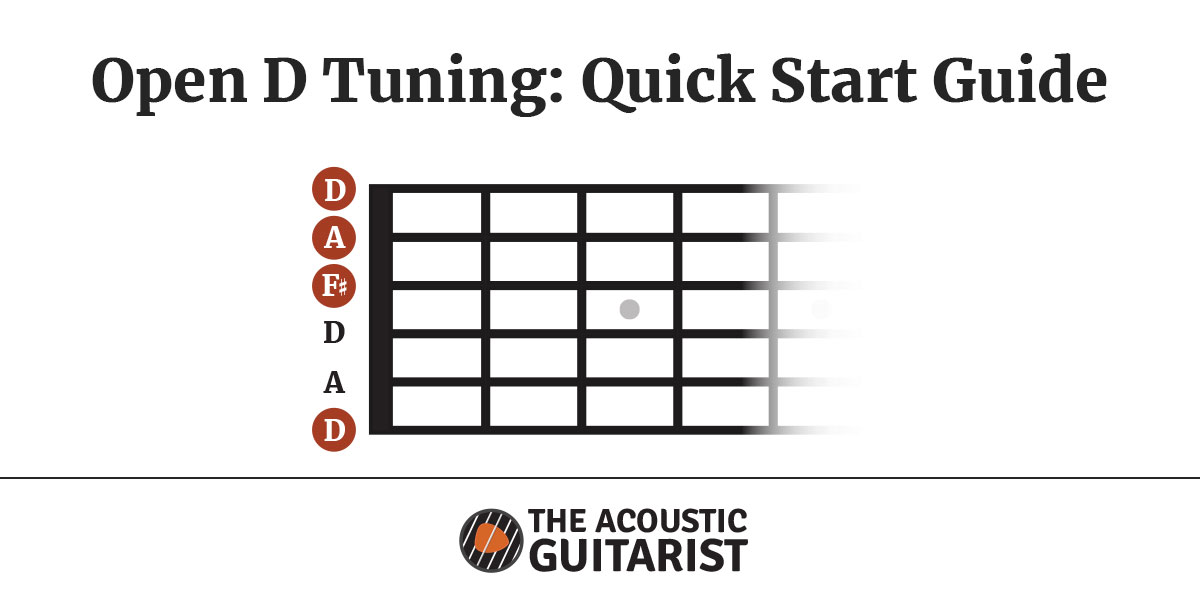Tired of playing the same old guitar-by-yourself-easy-heres-why/” title=”How hard is it to learn guitar by yourself? Easy, Here's why”>chords in standard tuning? Ready to unleash your inner guitar god (or goddess) and explore the wild world of open tunings? Well buckle up, because we’re about to take you on a musical journey like no other. From sliding into new chord shapes to shredding through scales you never knew existed, mastering open tunings is the key to unlocking a whole new level of guitar wizardry. So grab your axe, tune up those strings, and get ready to rock your socks off with our must-know chords and scales for open tuning mastery. Let’s dive in and turn those ordinary notes into extraordinary music!
Contents
- 1 Understanding the Basics of Open Tunings
- 2 Exploring Major Chords in Open Tunings
- 3 Navigating Minor Chords within Open Tunings
- 4 Developing Scale Patterns for Improvisation
- 5 Adapting Standard Tuning Chords to Open Tunings
- 6 Crafting Unique Riffs and Melodies in Open Tunings
- 7 Techniques for Smooth Transitioning Between Chords
- 8 FAQs
- 9 Tune in, Turn up, and Rock Out!
Understanding the Basics of Open Tunings
So, you want to dive into the world of open tunings, huh? Well, let me tell you, it’s a whole new dimension of guitar playing that will blow your mind! But before you get too ahead of yourself, let’s cover the basics first.
First things first, open tunings are when you tune your guitar strings to a chord, allowing you to strum the open strings and create a beautiful, harmonious sound without even touching the frets. It’s like magic, I tell ya!
Now, there are a few common open tunings that you should know about, including:
- DADGAD: This is a popular open tuning that gives you a rich, drone-like sound perfect for folk and Celtic music.
- Open G: This tuning is great for playing blues and rock music, and it’s what Keith Richards of The Rolling Stones used for many of their hits.
- Open D: Another favorite among guitarists, this tuning is versatile and works well for both fingerstyle and slide guitar.
So, grab your guitar, experiment with some open tunings, and prepare to be amazed at the gorgeous sounds you can create. Who needs standard tuning anyway? Open tunings are where it’s at!

Exploring Major Chords in Open Tunings
So you’ve mastered your basic chords in standard tuning, but have you ever tried ? It’s like discovering a whole new world of sound! With just a few tweaks to your guitar strings, you can create rich, vibrant chords that will have you strumming away for hours on end.
By experimenting with open tunings like Open G or Open D, you can open up a whole new realm of possibilities for your music. Suddenly, those boring old major chords take on a whole new life, ringing out with a depth and resonance that you never knew was possible. Give it a try and watch as your playing transforms from amateur to rock star in no time!
Whether you’re a seasoned pro or just starting out on your guitar journey, is a fun and challenging way to take your playing to the next level. So grab your guitar, retune those strings, and get ready to embark on a musical adventure like never before!
So what are you waiting for? Dive into the world of open tunings and discover the magic of major chords in a whole new light. Who knows, you might just stumble upon your next big hit!

So you’ve decided to venture into the world of minor chords within open tunings. Congratulations, brave soul! This journey will be filled with twists and turns, but fear not! With a bit of patience and a dash of determination, you’ll come out the other side a master of the minor chord.
First things first, let’s talk about the foundation of any chord progression – the root note. In open tunings, the root note of a minor chord may not always be where you expect it to be. Take some time to familiarize yourself with the new layout of notes on your fretboard. It may feel like you’re playing a whole new instrument, but trust us, it’s just your trusty old guitar in disguise!
Next, let’s dive into the world of voicings. Minor chords can take on a whole new life within open tunings, offering unique and hauntingly beautiful sounds. Experiment with different fingerings and voicings to discover the full potential of these chords. Don’t be afraid to get a little wild and try out some unconventional shapes – after all, creativity knows no bounds!
Lastly, remember that practice makes perfect. may feel like learning to ride a unicycle while juggling flaming torches, but with dedication and perseverance, you’ll be wowing audiences with your newfound skills in no time. So grab your guitar, tune up to an open tuning, and let the magic of minor chords sweep you off your feet!

Developing Scale Patterns for Improvisation
So you’ve mastered your pentatonic scale and can shred a mean blues solo. But now it’s time to take your improvisation skills to the next level by developing scale patterns that will amaze and delight your audience.
Here are some tips to help you unlock new scale patterns:
- Experiment with different starting points on the fretboard to break out of old habits and find fresh musical ideas.
- Use chromatic notes to add tension and create a more dynamic sound. Don’t be afraid to color outside the lines!
- Practice playing scales in different modes to expand your tonal palette and create a more interesting solo.
Remember, is all about pushing your boundaries and trying new things. So grab your guitar, get out there, and start shredding!

Adapting Standard Tuning Chords to Open Tunings
So, you’ve mastered standard tuning chords and now you’re ready to dip your toes into the world of open tunings. Congratulations, you brave soul! might seem like a daunting task at first, but fear not, my friend, for I am here to guide you through this musical labyrinth.
First things first, let’s talk about the magic of open tunings. Unlike standard tuning where the strings are tuned to EADGBE, open tunings involve tuning your strings to create a specific chord when strummed open. This means that you can achieve a rich, resonant sound with minimal effort. It’s like having a cheat code for your guitar!
Now, onto the fun part – adapting those standard tuning chords to open tunings. The key here is to understand how each chord shape translates to the new tuning. For example, your trusty G major chord in standard tuning might become a majestic D major chord in open D tuning. It’s like witnessing a butterfly emerge from its chrysalis, only much more rock ‘n’ roll!
Experimentation is key when it comes to . Don’t be afraid to try out different fingerings and voicings to see what sounds best in the new tuning. And remember, there are no rules in music – only possibilities. So go forth, fearless guitarist, and unleash the power of open tunings upon the world!
Crafting Unique Riffs and Melodies in Open Tunings
So you’ve mastered the art of open tunings and now you’re ready to take your guitar playing to the next level by crafting some truly unique riffs and melodies. Well, you’ve come to the right place because I’ve got some tips and tricks that will have you sounding like the next guitar hero in no time.
First things first, experiment with different combinations of notes and chords in your open tuning. Don’t be afraid to push the boundaries and try something new. Who knows, you might stumble upon a killer riff that will have everyone begging to know your secret.
Another trick is to incorporate slide guitar techniques into your playing. The beauty of open tunings is that they lend themselves well to slide playing, so grab a slide and start exploring the fretboard in ways you never thought possible.
And last but not least, don’t forget to listen to your favorite guitarists for inspiration. Study their riffs and melodies, then put your own twist on them to create something truly original. Remember, imitation is the sincerest form of flattery, but innovation is what will set you apart from the rest.
Techniques for Smooth Transitioning Between Chords
So you’ve mastered playing individual chords on your guitar, but now it’s time to level up and learn how to smoothly transition between chords like a pro! Here are some techniques to help you nail those chord changes with finesse:
- Practice, practice, practice! The key to smooth transitioning is muscle memory, so keep those fingers moving and don’t be afraid to make mistakes.
- Use anchor fingers to guide your way. Find common notes between chords and keep one finger in place as you switch to the next chord. It’s like leaving breadcrumbs for your fingers to follow!
- Work on your timing. The key to seamless chord changes is hitting the new chord right on the beat. Use a metronome or tap your foot to keep yourself in rhythm.
Remember, Rome wasn’t built in a day, and neither will your flawless chord transitions. Be patient with yourself and embrace the journey of learning. Before you know it, you’ll be strumming away like a seasoned rockstar!
FAQs
Why should I bother learning open tunings?
Because regular tuning is boring! Open tunings open up a whole new world of possibilities for your playing, allowing you to create unique and interesting sounds that you just can’t achieve with standard tuning. Plus, it’s a great way to impress your friends and annoy your neighbors.
What are some essential chords to learn in open tunings?
Some must-know chords in open tunings include the essential major and minor chords, as well as some more exotic options like suspended and add9 chords. Experimenting with different chord shapes will help you unlock the full potential of open tunings.
How can I master scales in open tunings?
Mastering scales in open tunings is all about understanding the relationships between the notes and how they interact with the unique tuning of your guitar. Practice your scales slowly and methodically, focusing on accuracy and fluidity in your playing. And don’t be afraid to experiment with different scale patterns to find what works best for you!
Any tips for transitioning between different open tunings?
Transitioning between different open tunings can be a bit tricky at first, but with practice, you’ll be able to switch between tunings seamlessly. One tip is to start by tuning your guitar to a standard tuning before switching to a different open tuning so you can reset your reference point. And remember, practice makes perfect!
What are some common mistakes to avoid when learning open tunings?
One common mistake to avoid when learning open tunings is relying too heavily on muscle memory from standard tuning. It’s important to approach open tunings with a fresh mindset and be willing to experiment with different chord voicings and scale patterns. Also, don’t be afraid to make mistakes – that’s all part of the learning process!
Tune in, Turn up, and Rock Out!
Congratulations, you’ve now unlocked the secrets to mastering open tunings! With these must-know chords and scales in your arsenal, you’re ready to take your playing to the next level. So grab your guitar, experiment with different tunings, and let your creativity flow! Remember, the only limit is your imagination. Keep rocking and never stop exploring the world of open tunings. Who knows, you might just stumble upon your own unique sound along the way. Happy strumming!



